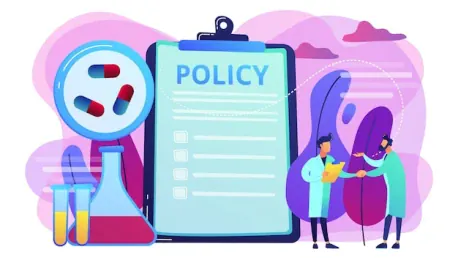In today’s interview, I’m thrilled to speak with Donald Gainsborough, a recognized expert and leader in the realm of policy and legislation who helms Government Curated. Donald has a wealth of experience navigating complex regulations and advising on compliance and policy issues within the healthcare sector. Our conversation will delve into the intricacies of the Price Transparency regulations and the No Surprises Act, two pivotal pieces of legislation aimed at enhancing consumer understanding of healthcare costs.
Can you explain the difference between the Price Transparency regulations and the No Surprises Act?
Price Transparency regulations and the No Surprises Act often get confused due to their overlapping objectives of making healthcare pricing more understandable. However, they serve distinct functions. Price Transparency regulations are primarily aimed at hospitals, requiring them to publish detailed pricing information for services, which include the actual charges rather than estimates. On the other hand, the No Surprises Act has a broader scope, targeting various healthcare settings to protect patients from unexpected out-of-network bills and ensuring they receive good-faith estimates before receiving non-emergency care.
How does the Price Transparency provision aim to help consumers understand healthcare pricing?
The Price Transparency provision is designed to give consumers clear, detailed information about hospital service charges. By mandating hospitals to provide a comprehensive list of their pricing for all services in a machine-readable format and offering an easy-to-navigate online list of shoppable services, consumers can better anticipate their healthcare expenditures and make more informed choices.
What are the key requirements hospitals must meet under the Price Transparency regulations?
Hospitals are required to meet two main directives under Price Transparency regulations: creating detailed machine-readable files of all their service charges and providing a user-friendly online list of shoppable services.
Can you elaborate on the creation of machine-readable files that hospitals need to produce?
Hospitals must compile machine-readable files that list every negotiated charge with each third-party payer for every service provided. This file should be exhaustive and include the highest and lowest charges for each service to give a clear picture of the cost variations.
What specific information must these files include about charges?
These files need to encompass various charge metrics, including gross charges, discounted cash prices, payer-specific negotiated charges, and de-identified minimum and maximum negotiated charges. This detailed breakdown ensures transparency and aids consumers in comparing prices across different hospitals and payers.
How are hospitals supposed to present shoppable services on their websites?
Hospitals must create a consumer-friendly, public-facing list on their websites that displays shoppable services. These lists should be easy to navigate and understand, offering clear descriptions of services, their charges, and any ancillary fees that might apply.
Why do you think the term “estimate” doesn’t appear in the Price Transparency provisions?
The absence of the term “estimate” in the Price Transparency regulations is deliberate to avoid any ambiguity about the pricing information. The regulations focus on actual, published charges rather than potentially variable estimates, ensuring that consumers get accurate pricing information.
How do the good-faith estimates under the No Surprises Act differ from the requirements of the Price Transparency regulations?
Good-faith estimates under the No Surprises Act are designed to inform patients about their expected billing costs before receiving care, addressing potential surprise bills from out-of-network providers. Unlike the fixed charges required by Price Transparency, these estimates provide a projected cost, factoring in expected services and associated fees.
Which healthcare settings and facilities does the No Surprises Act apply to?
The No Surprises Act applies broadly across various healthcare settings, including hospitals, freestanding emergency departments (EDs), and ambulatory surgical centers (ASCs). It also extends to lab testing sites, imaging centers, and potentially skilled nursing facilities.
Can you list the types of care covered by the No Surprises Act?
The Act covers emergency care, in-network care implicating out-of-network professionals, and non-emergency scheduled care, ensuring protections across a wide array of healthcare scenarios to prevent surprise billing.
What are the two main requirements under the No Surprises Act?
The No Surprises Act mandates that patients receiving emergency care and certain non-emergency care at in-network facilities are not billed more than the in-network cost-sharing amount. Additionally, it requires facilities and providers to give good-faith estimates of charges before non-emergency services upon request.
How does the requirement for out-of-network care differ from the good-faith estimate requirement?
For out-of-network care, the Act ensures that patients are not liable for higher charges than in-network rates, removing financial uncertainty in emergencies. In contrast, good-faith estimates cater to pre-scheduled non-emergency care, providing cost projections to prevent billing surprises.
Why do you believe the Executive Order dated Feb. 25 might create confusion about these regulations?
The confusion stems from the Executive Order’s language, which might be interpreted as overlapping the regulations of both Acts. By emphasizing the disclosure of actual prices rather than estimates, the Order could unintentionally blur the clarity of each Act’s requirements, leading to misinterpretations.
How would you recommend hospitals ensure they are compliant with both Price Transparency and the No Surprises Act?
Hospitals should invest in robust compliance programs that differentiate the requirements of each Act. They must train their staff accordingly and utilize technological solutions to ensure accurate and comprehensive data reporting for Price Transparency and effective communication of good-faith estimates under the No Surprises Act.
In your opinion, what are the potential benefits and drawbacks of these regulations for consumers?
These regulations offer substantial benefits, primarily empowering consumers through increased price transparency and protection from surprise bills. However, there can be drawbacks, such as the potential overwhelming nature of detailed pricing data and the administrative burden on healthcare facilities to ensure compliance. Balancing transparency with usability is crucial for these regulations to achieve their intended impact.
Do you have any advice for our readers?
Staying informed and proactive is vital. By regularly consulting updated pricing information and understanding their rights under these Acts, consumers can mitigate unexpected healthcare costs and make better-informed healthcare decisions.









